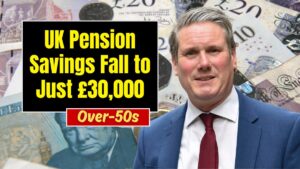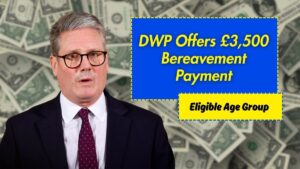Finance expert Martin Lewis is once again helping Britons keep more of their hard-earned money. Through his Money Saving Expert platform, he’s revealed how individuals can boost their tax-free Personal Allowance to £18,570 — completely legally.
The strategy uses a combination of three tax-free mechanisms available through HMRC: the Personal Allowance, the Starting Rate for Savings, and the Personal Savings Allowance.
Together, they can create a powerful advantage for those earning lower or moderate incomes with interest-bearing savings.
Understanding the £18,570 Tax-Free Limit
Under current rules:
- Everyone in the UK has a Personal Allowance of £12,570, meaning you pay no income tax on earnings up to that threshold.
- Above this, you pay 20% tax as a basic-rate taxpayer, and 40% if you earn over £50,270.
- However, savings income — such as interest on bank deposits — can qualify for additional tax-free allowances.
By combining these allowances, Martin Lewis says some people can effectively earn up to £18,570 in total income (salary + savings interest) without paying a penny in tax.
Breakdown of Allowances
| Allowance Type | Amount | Purpose / Explanation |
|---|---|---|
| Personal Allowance | £12,570 | Tax-free earnings threshold for everyone (unless income exceeds £125,140) |
| Starting Rate for Savings | Up to £5,000 | Extra tax-free allowance on savings interest for those with lower incomes |
| Personal Savings Allowance (PSA) | £1,000 | Additional tax-free savings interest for basic-rate taxpayers |
| Total Potential Tax-Free Income | £18,570 | Combined maximum limit of earnings and savings interest tax-free |
This combination is entirely legitimate and recognized by HMRC. However, it only applies if your earned income is below or near £12,570, so that the Starting Rate for Savings remains intact.
How It Works
The Starting Rate for Savings offers up to £5,000 of tax-free savings interest in addition to your Personal Allowance. For every £1 of non-savings income above your £12,570 allowance, you lose £1 of this savings allowance.
For example:
- If you earn £12,000 in salary and receive £5,000 in interest, all of it could be tax-free.
- But if your salary rises to £17,570, you’ll lose your full £5,000 savings allowance.
On top of this, the Personal Savings Allowance provides £1,000 more in tax-free savings interest for basic-rate taxpayers. This means that — in the best-case scenario — the total tax-free threshold could reach £18,570 (£12,570 + £5,000 + £1,000).
Who Benefits Most
This system benefits:
- Low-income earners or part-time workers with modest savings.
- Retirees who rely on interest income rather than high salaries.
- Savers looking to maximize returns without entering higher tax brackets.
It’s also an excellent opportunity for individuals using high-interest savings accounts, as interest rates remain relatively high compared to recent years.
Key Points to Remember
- The £5,000 Starting Rate for Savings only applies if your non-savings income is below £17,570.
- Higher-rate taxpayers generally won’t qualify since their income exceeds the threshold.
- The scheme applies automatically through HMRC’s tax system; no application is required.
Martin Lewis’s £18,570 tax-free allowance tip is a powerful reminder that small tweaks in financial planning can save hundreds of pounds a year. By understanding and leveraging the Starting Rate for Savings and Personal Savings Allowance, lower and moderate-income earners can legally maximize their tax-free earnings.
For millions struggling with the cost-of-living crisis, this simple adjustment can make a meaningful difference — turning knowledge into real, lasting savings.
FAQs
Can higher earners use this £18,570 allowance?
No. The full benefit only applies to individuals with lower or moderate earnings. Higher earners lose the additional savings allowances as their income rises.
Do ISAs count toward this limit?
No. ISA savings are already tax-free and do not affect your other allowances. You can hold ISAs alongside this scheme for even greater tax efficiency.
How can I check if I qualify?
You can review your income and interest totals using your tax summary or bank statements. HMRC automatically adjusts allowances based on your income data.


